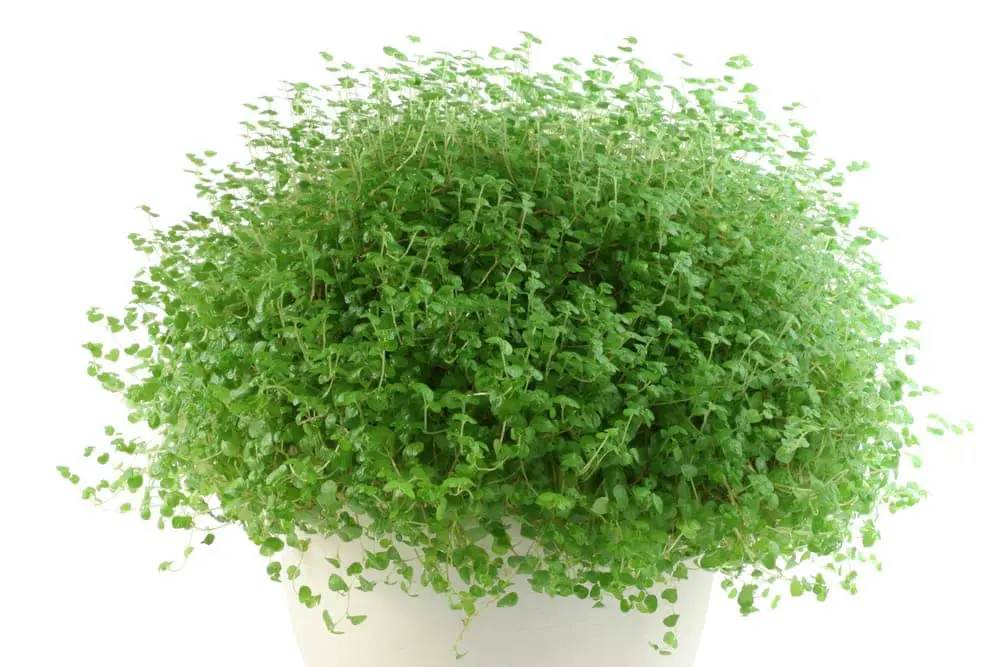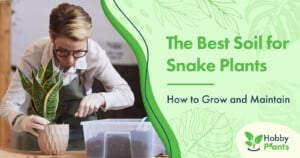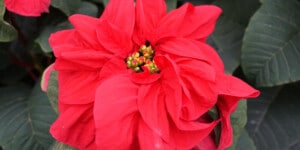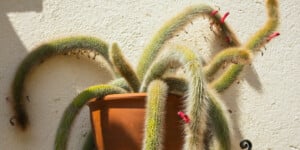Baby Tears were originally brought into the plant trade by Joseph Francois Soleroil in Corsica.
This particular kind of plant is a member of the nettle family and are usually used as an evergreen ground cover as well as fillers for gardens or rock gardens. This plant is known to spready very quickly.
Baby Tears Plants and Growing Guide
1. Baby Tears in Soil
This plant requires a rich soil to grow in. When you plant Baby Tears, be sure that the soil you plant it in is rich with compost, or even manure. These things will increase and regulate the moisture level for your Baby Tears.
However, any type of regular potting soil that you can pick up at your local gardening store will also work fine as growing material. If you are keen on growing Baby Tears outdoors, you can choose to amend that soil with different types of compost and organic material so it maintains the proper moisture levels for your Baby Tears to thrive.
2. Light
First and foremost, Baby Tears is considered to be a houseplant – although, it can grow outside. But, with that being said, one of its many perks is that it does not require direct sunlight. This plant is capable of growing and thriving in areas that are shady or have minimal light. They are able to take in periods of direct sunlight, if needed, but filtered light is what the plant prefers.
Remember – this plant can be persnickety. If it sits in the sun for too long or has too much sun exposure, it may develop brown and scorched leaves. If you intend to plant your Baby Tears plant outdoors, it should be planted in a location that is shaded or receives very little light.
3. Water
These little plants are very thirsty, and in turn, they should never go without water or even be close to drying out. It is best to keep the container you planted your Baby Tears in to be consistently wet and/or moist (but keep in mind that it should never be soggy for fear of overwatering!)
If your Baby’s Breath does dry out, then you will see the leaves take a dramatic shift in wilting. If this happens, make sure to water them as quickly as possible, and they should recover quickly. If you chose to plant your Baby’s Breath inside, then your plant will need considerably less water than it would if it was planed outside.
Baby’s Breath also does not need as much water during the colder months of the year. When it comes to watering your Baby’s Breath, be sure that your plant has a moist environment, but the water is not soggy because that will cause the roots to rot.
More like this: Gooseneck Loosestrife Care and Growing Guide
4. Fertilizer
Baby’s Breath does not need fertilizer as much as other plants do. If you do choose to fertilize your Baby’s Breath, it will keep the plant a bright green color as well as keeping it dense. In the beginning, if you are having issues with your Baby’s Breath growing, then it is important for you to fertilize the seeds once or twice every two weeks during the warmer months.
The seed is being fermented during this time frame, and it is also when is the possibility of growth is high, so it is possible that your seeds do need that additional sustainable nutrient. If you intend to fertilize your Baby’s Breath, be sure to choose a fertilizer that incorporates healthy plant nourishment into it. When fertilizing, make sure you dilute it at least by half.

5. Potting and Repotting
Repotting Baby’s Breath is quite an easy process. With how quickly these plants grow, it is almost vital to repot or replant them within several months. Normally during the fall is when they begin to outgrow their intended areas or pots. When this does happen, make sure to select a pot that is at least 1-2 inches bigger than the previous pot, and mix in potting soil along with high-quality fertilizers.
However, be cautious in this endeavor, as Baby’s Breath does have a tendency to dry out when replanted or repotted. Since the plant’s stems are so incredibly fragile, be sure not to yank up on them when moving them into their respective containers or outside. Instead of potentially shocking the plant, it would be a much smarter move to turn the pot or holder your plant is currently in upside down, and gently tap or push the drainage hole at the bottom of the holder until the Baby’s Breath comes loose.
This ensures the plant’s safety throughout the repotting or replanting situation. Remember when you repot or replant your Baby’s Breath to mix it with potting soil and high-quality fertilizer, as well as water it.
Similar post: Croton Mammy: Plant Care & Growing Guide
6. Temperature Differentials
Baby’s Breath can be grown indoors or outdoors. For these plants, indoor environments are best because they thrive in temperatures anywhere from 50 to 70 degrees. It is also easier to control the environment in the home as well. Remember, with this little plant that the higher the temperature is surrounding the plant, the more attention its caretaker has to pay to the light it is receiving and the humidity it is getting. Keep in mind that these plants love humidity as well.
If your Baby’s Breath is planted outside, keep in mind that it can tolerate a light frost, but cannot tolerate freezing temperatures. Freezing temperatures will undoubtedly kill the top layer of the plant. However, if this does happen to you, Baby’s Breath will come back the next season once the roots have warmed in the changing climate.
Also read: Gladiolus: Plant Care and Growing Guide
Conclusion
Baby’s Breath is a beautiful plant that you can decorate the indoors of your home with or the outdoors of your home with. They are fairly easy to take care of as well as look beautiful. Their care is minimal, and they are resistant to many zones. If you are looking for a plant that is simple and not a lot of maintenance, this would definitely be one to look into.
Keep reading:
- Pothos vs Philodendron – How to tell the difference
- Clematis Care & Growing Guide
- Flowering Kalanchoe: Plant Care and Growing Guide
Victoria is the owner and main author of hobby plants. She loves spending her free time in her garden planting and taking care of her plants. Victoria hopes you enjoy the content here!




![Mother Of Thousands Plant [Complete Plant Care Guide] Mother Of Thousands Plant [Complete Plant Care Guide]](https://www.hobbyplants.com/wp-content/uploads/2022/07/mother-of-thousands-plant-300x158.jpg)





![Majesty Palm Plant Care: [Complete Beginner's Guide] Majesty Palm Plant Care: [Complete Beginner's Guide]](https://www.hobbyplants.com/wp-content/uploads/2022/08/majesty-palm-care-300x158.jpg)
![Exotic Angel Plant Care: [Complete Beginner's Guide] Exotic Angel Plant Care: [Complete Beginner's Guide]](https://www.hobbyplants.com/wp-content/uploads/2022/08/exotic-angel-plant-care-300x158.jpg)
